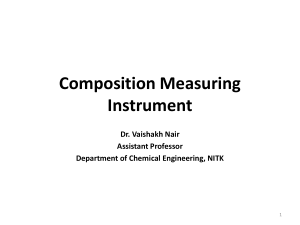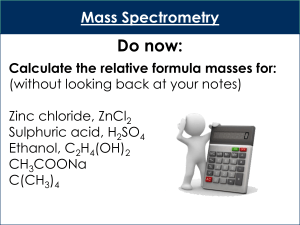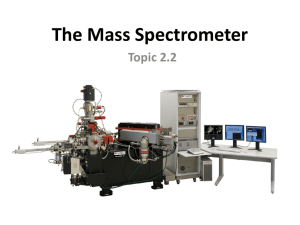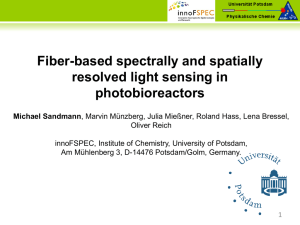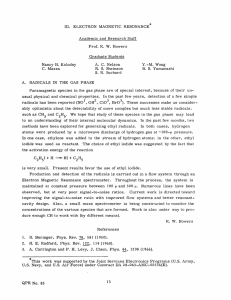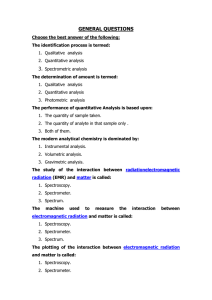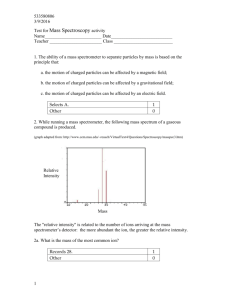Lorentz Force - Mass Spectrometer
advertisement
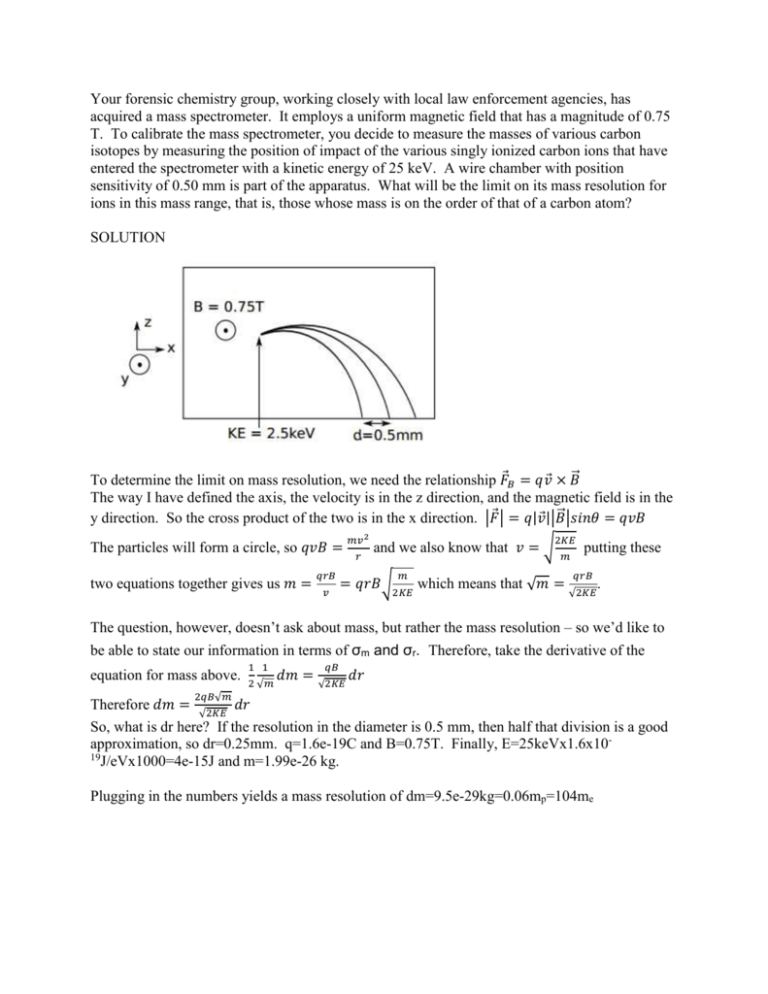
Your forensic chemistry group, working closely with local law enforcement agencies, has acquired a mass spectrometer. It employs a uniform magnetic field that has a magnitude of 0.75 T. To calibrate the mass spectrometer, you decide to measure the masses of various carbon isotopes by measuring the position of impact of the various singly ionized carbon ions that have entered the spectrometer with a kinetic energy of 25 keV. A wire chamber with position sensitivity of 0.50 mm is part of the apparatus. What will be the limit on its mass resolution for ions in this mass range, that is, those whose mass is on the order of that of a carbon atom? SOLUTION ⃗⃗ To determine the limit on mass resolution, we need the relationship 𝐹⃗𝐵 = 𝑞𝑣⃗ × 𝐵 The way I have defined the axis, the velocity is in the z direction, and the magnetic field is in the ⃗⃗ |𝑠𝑖𝑛𝜃 = 𝑞𝑣𝐵 y direction. So the cross product of the two is in the x direction. |𝐹⃗ | = 𝑞|𝑣⃗||𝐵 The particles will form a circle, so 𝑞𝑣𝐵 = two equations together gives us 𝑚 = 𝑞𝑟𝐵 𝑣 𝑚𝑣 2 𝑟 2𝐾𝐸 and we also know that 𝑣 = √ 𝑚 𝑚 = 𝑞𝑟𝐵√2𝐾𝐸 which means that √𝑚 = putting these 𝑞𝑟𝐵 √2𝐾𝐸 . The question, however, doesn’t ask about mass, but rather the mass resolution – so we’d like to be able to state our information in terms of σm and σr. Therefore, take the derivative of the equation for mass above. 1 1 2 √𝑚 𝑑𝑚 = 𝑞𝐵 √2𝐾𝐸 𝑑𝑟 2𝑞𝐵√𝑚 Therefore 𝑑𝑚 = 𝑑𝑟 √2𝐾𝐸 So, what is dr here? If the resolution in the diameter is 0.5 mm, then half that division is a good approximation, so dr=0.25mm. q=1.6e-19C and B=0.75T. Finally, E=25keVx1.6x1019 J/eVx1000=4e-15J and m=1.99e-26 kg. Plugging in the numbers yields a mass resolution of dm=9.5e-29kg=0.06mp=104me
